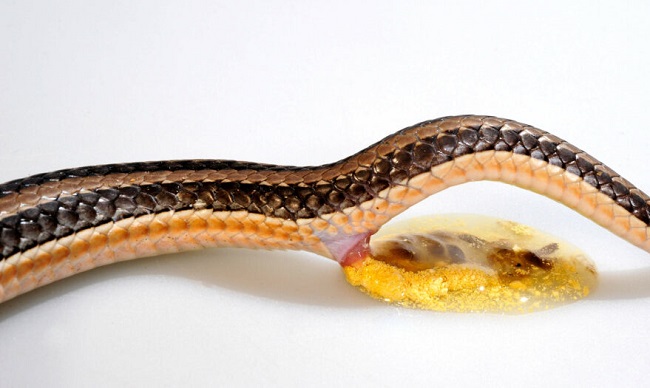Snake physiology is as captivating as it is unique. One of the many intriguing aspects of snake biology is their digestion and excretion process.
Ever wondered, how do snakes poop? Well, let’s unravel this mystery and gain some insight into the inner workings of these scaly creatures.

Understanding the Snake’s Digestive System
The snake’s digestive journey starts at the mouth, where they swallow their prey whole. Thanks to their flexible jaw, they can consume prey much larger than their head size.
Read Also:
Once swallowed, the food travels down the esophagus and into the stomach, where powerful acids dissolve the food, bones and all.
Following the stomach, the partially digested food moves into the small intestine, where further digestion and absorption of nutrients occur. The remaining indigestible material then moves into the large intestine, which primarily reabsorbs water, and finally into the cloaca.
The Cloaca: The All-Purpose Exit
Snakes, like many reptiles, have an all-purpose exit called the cloaca. This orifice, located near the base of the tail, serves multiple purposes, including excretion of both solid waste and urine, as well as reproduction.
So, How Do Snakes Poop?
When it’s time for a snake to poop, the indigestible material is passed from the large intestine into the cloaca and then out of the snake’s body.
Snake poop usually looks like a white or brown smear, with white parts being uric acid (a waste product) and brown parts being indigestible material like fur or feathers.
Frequency and Factors Influencing Snake Pooping
The frequency of a snake’s bowel movement largely depends on its diet, size, and metabolic rate. Smaller snakes with faster metabolisms tend to defecate more frequently than larger snakes.
Most snakes will poop within a few days to a week after eating, although some snakes may go weeks or even months between bowel movements.
Importance for Snake Owners
Understanding how your snake poops can be crucial for pet owners, as changes in a snake’s excrement can be an important sign of health or illness.
It’s vital to regularly monitor your snake’s bowel movements for any changes in size, frequency, or color, and consult a vet if anything seems off.
Key Takeaways
- Snakes digest their food in the stomach and intestines, and excrete waste through a multipurpose orifice called the cloaca.
- Snake poop usually looks like a white or brown smear, with white parts being uric acid, and brown parts being indigestible material.
- Monitoring your pet snake’s poop can be an important aspect of ensuring its good health.
In the grand tapestry of biology, every creature has its unique ways, and the process of how snakes poop offers a small, yet fascinating glimpse into the remarkable diversity of life on our planet.
Read Also:
Conclusion
The snake’s unique digestive system, including its all-purpose cloaca, demonstrates the fascinating adaptability of nature. Though it might seem like a small detail, knowing how snakes poop can provide invaluable insights into their health and wellbeing.
The world of snakes is full of fascinating quirks, not least of which is their digestive process. For those wondering ‘how do snakes poop,’ you’re about to embark on an intriguing exploration into the biology of these exceptional reptiles.
Armed with a deeper understanding, we can ensure the wellbeing of our slithering companions and foster a greater appreciation for their unique nature.
























